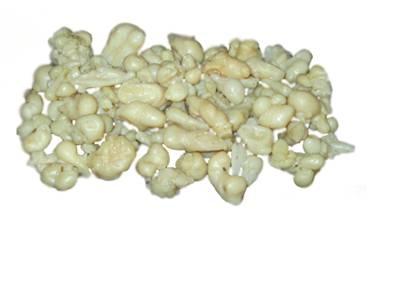DESCRIPTION
It is a gum–resin exuded from the stem of a perennial herb of the umbel family. The plant grows to the height of around 8 or 9 ft., and its whole stem is pervaded with a milky juice, which oozes out on an incision being made at any part. This juice quickly hardens into round tears. “Lump ammoniacum,” the other form in which the substance is met with, consists of aggregations of tears, frequently incorporating fragments of the plant itself, as well as other foreign bodies. Ammoniacum has an unpleasant odor, which becomes more distinct on heating; externally it possesses a reddish-yellow appearance, and when the tears or lumps are freshly fractured they exhibit a waxy luster. It is mainly collected in Iran.
MEDICINAL USES

